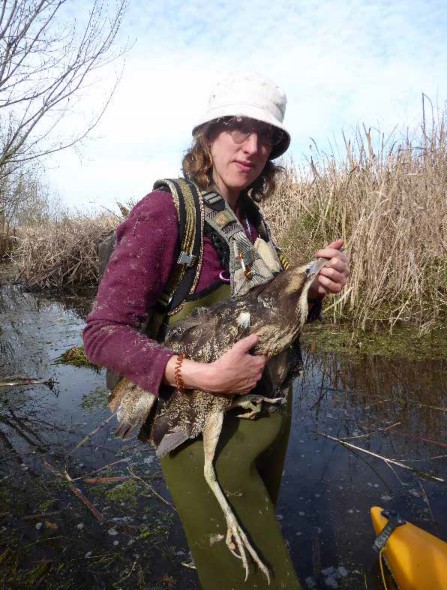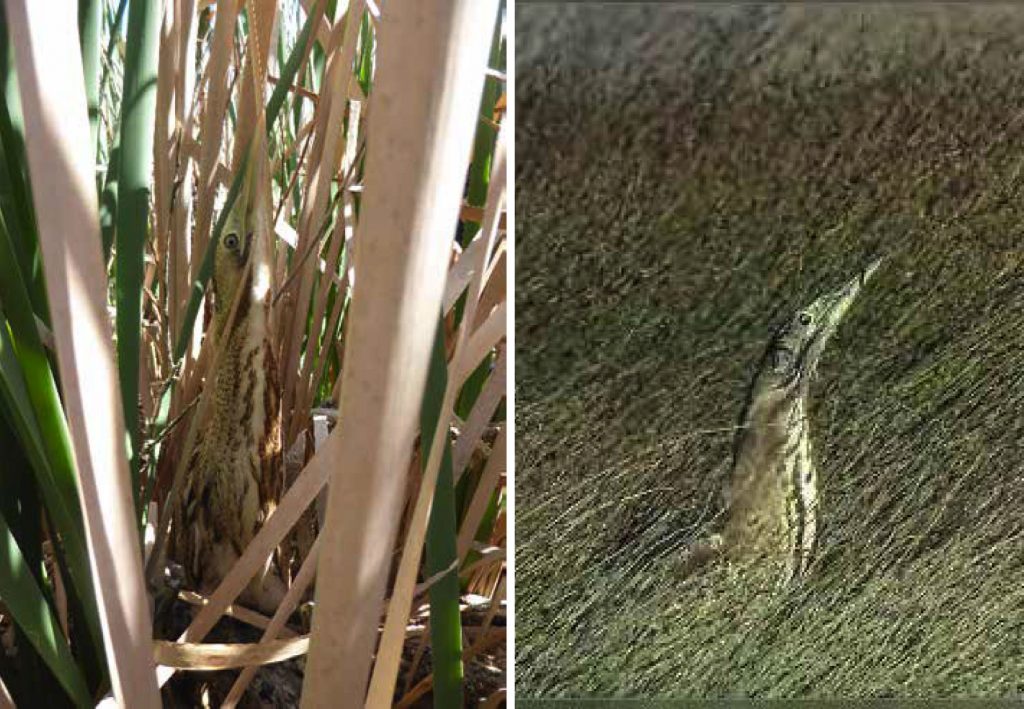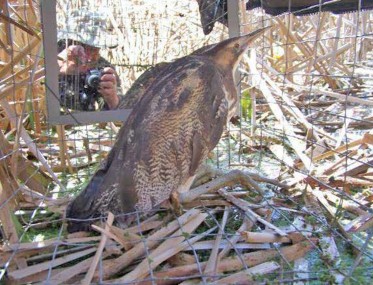
There was bad news – but possibly also a silver lining – from Australasian Bittern researcher Emma Williams when she addressed the mid-winter potluck dinner: bitterns, she told members, were about to be upgraded from ‘nationally endangered’ to ‘nationally critical’.
That is the highest threat ranking, and reflects the parlous position of this mysterious, secretive and fascinating bird, but hopefully it may lead to more resources being put into learning how best to safeguard its future.
Emma said the Australasian Bittern was found only in New Caledonia, Australia and New Zealand. ‘A decade ago there were thought to be less than 1000 adult bitterns each in New Zealand and Australia, and fewer than 50 in New Caledonia.
‘However, recently Australia has lost large numbers of its population, and the New Caledonian population is thought to have vanished. New Zealand is therefore an important place for the survival of the species.’
The New Zealand population is almost certainly declining, too, but precisely because the birds are so mysterious we don’t know much about them . . . a situation Emma has spent the past few years trying to rectify
Originally from England, she started researching bitterns in 2009 under a Department of Conservation contract which subsequently expanded into work for an MSc and now a PhD at Massey University.
In that time she has focussed mainly on developing methods of monitoring cryptic species like bitterns, in particular how best to catch them in order to fit transmitters.
These days she is based at Lake Whatuma, near Waipukurau, in Hawkes Bay, where in the 2014 season she caught six males – which because of their amazing booming they were given the names of human crooners like Bing Crosby and Prince Tui Teka – and as a result was able to track their seasonal movements. The most remarkable finding was that when the lake dried up in summer all the males left and one travelled 15km down a watercourse looking for food.

Bitterns are, it seems, prepared to go a long way in search of something to eat. One female released at the Waimakariri Estuary was found 100km away and, sadly, it was dead from starvation.
Indeed, lack of food is clearly a major reason for the species’ decline. Emma reported that many of the sick bitterns brought into care by members of the public were starving and those that survived long enough to be released seemed to have trouble finding food through the winter and died of starvation around June.
That should come as no great surprise because 90% of the wetlands, where bitterns live, breed and feed, have been drained, with disastrous consequences for all the species that used to live there. ‘Bitterns favourite food,’ Emma points out, ‘is eels which are also considered to be under threat.’
Fortunately, bitterns are opportunistic feeders happy to snack on the likes of small fish, insects and frogs. However, their ability to catch their prey is severely affected by poor water clarity when wetlands become degraded, and also by water depth when landowners dig deep drains or use wetlands as holding ponds, creating a situation where bitterns have, as Emma puts it, ‘the same chance of catching their prey as a drunk man has of catching a teddy bear in the pub with a crane claw machine.’
Unfortunately bitterns also have characteristics that suggest they may be highly vulnerable to wetland predators. They have small clutch sizes, they only lay once a year, only the female incubates and she is much smaller that the male, the female also has to leave the nest to feed which leaves her eggs/chicks very vulnerable . . . and, unlike their secretive parents, the chicks are very smelly and noisy.’
It all sounds rather depressing and one member asked Emma if trying to save our bitterns was a waste of time. No, she replied, it was not a waste of time. Certainly there were challenges. But there were also reasons for optimism.
The key to the bittern’s survival lay in providing suitable wetlands for them to live and feed in and there were opportunities for this to happen.

For instance, one of the main sponsors of her research work is Ducks Unlimited which, although it is primarily aimed at creating wetland habitat for ducks, was also interested in making the wetlands suitable for bitterns. ‘Duck hunters are very happy to provide an environment that is good for bitterns so long as it is still good for ducks.’As a result, part of her research is now focussed on finding out what bitterns need habitat-wise ‘so we can make this information publicly available so that anyone who’s interested in creating, managing or restoring a wetland can do so with bitterns in mind.’
That’s a very interesting point when you consider that PMNT now owns a wetland in an area where bitterns have bred successfully in recent years.
You can find out more about Emma Williams’ work at https://facebook.com/swampbird.research
